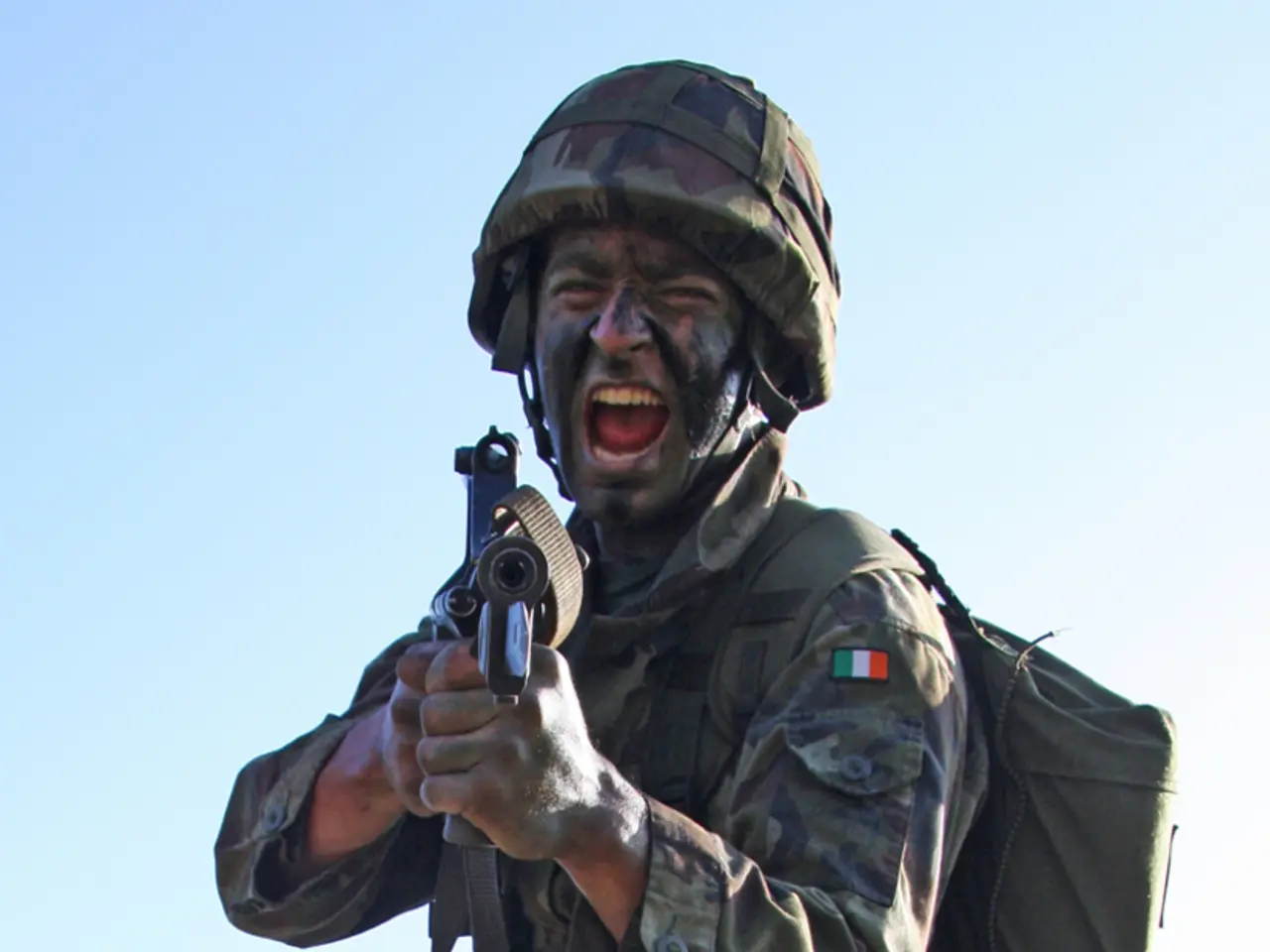U.S. Hosts Change of Command Ceremony, with Field Marshal Munir in Attendance from CENTCOM
The US-India trade relationship is currently experiencing a period of strain, with ongoing negotiations for a bilateral trade agreement (BTA) aiming to boost trade. In early August 2025, the US imposed a 25% tariff on Indian exports and proposed a further 25%, potentially doubling to 50%, citing issues such as India's arms and oil purchases from Russia [1][2][4].
Despite these tensions, India and the US remain significant trading partners. In the April-July period of 2025, India's exports to the US grew by over 21% to $33.53 billion, and imports from the US rose 12.33% to $17.41 billion. Bilateral trade during this period reached $12.56 billion, with both sides committed to concluding the first phase of the BTA by fall 2025 and targeting a doubling of trade from $191 billion to $500 billion by 2030 [1].
Indian Prime Minister Narendra Modi has publicly opposed tariff hikes, emphasizing protection of sensitive sectors such as agriculture and dairy, which India refuses to open up to US demands. Modi also emphasized support for Indian farmers, fishermen, and cattle rearers, signaling resistance to perceived harmful US trade policies [1][2].
Diplomatic dynamics regarding Russia, particularly US President Trump's recent meeting with Russian President Putin, have injected some ambiguity. Trump deferred imposing the secondary sanctions and possible further tariffs pending developments in Russia-US relations and the Ukraine conflict, creating a potential but uncertain window for easing tensions that would affect the tariff outlook on Indian exports [1][2].
Meanwhile, in the realm of military cooperation, COAS Field Marshal Syed Asim Munir, the Chief of Army Staff of Pakistan, visited the US. The visit occurred amid rising tensions between the US and India, and during this time, Field Marshal Munir attended the retirement ceremony of General Michael E. Kurilla, the outgoing Commander of the US Central Command (CENTCOM). He also lauded General Kurilla's leadership and his role in strengthening bilateral military cooperation [3].
Field Marshal Munir also met with General Dan Caine, Chairman Joint Chiefs of Staff, to discuss matters of mutual professional interest. During an interactive session with the Pakistani diaspora, he encouraged expatriates to remain confident in the country's future. He also invited General Dan Caine to visit Pakistan [3].
The visit concluded with Field Marshal Munir attending the change of command ceremony for Admiral Brad Cooper, who assumed command of CENTCOM. He conveyed best wishes to Admiral Cooper and expressed confidence in continued collaboration to address shared security challenges [3].
The ongoing trade tensions between the US and India, coupled with the visit of Pakistan's army chief to the US, underscore the complex geopolitical landscape in the region. Analysts note the potential for further deterioration or stabilization in the US-India partnership, depending on both sides' willingness to find mutually acceptable compromises [3][4].
[1] The Economic Times
[2] The Hindustan Times
[3] The Express Tribune
[4] The Diplomat
- In the midst of this trade tension, the interest in concluding a mutually beneficial Bilateral Trade Agreement (BTA) remains strong for both the US and India, with a target to double trade from $191 billion to $500 billion by 2030.
- Indian investments in retirement plans, such as IRAs, might be affected by the ongoing war-and-conflicts-related politics, particularly the US-Russia relationship, as tariffs on Indian exports could be influenced by developments in the Ukraine conflict.
- Politics and general news, stemming from the US-India trade negotiations and diplomatic meetings like the one between COAS Field Marshal Syed Asim Munir of Pakistan and General Dan Caine, the Chairman Joint Chiefs of Staff, could shape the future investment landscape in areas such as agriculture, dairy, defense, and security.





